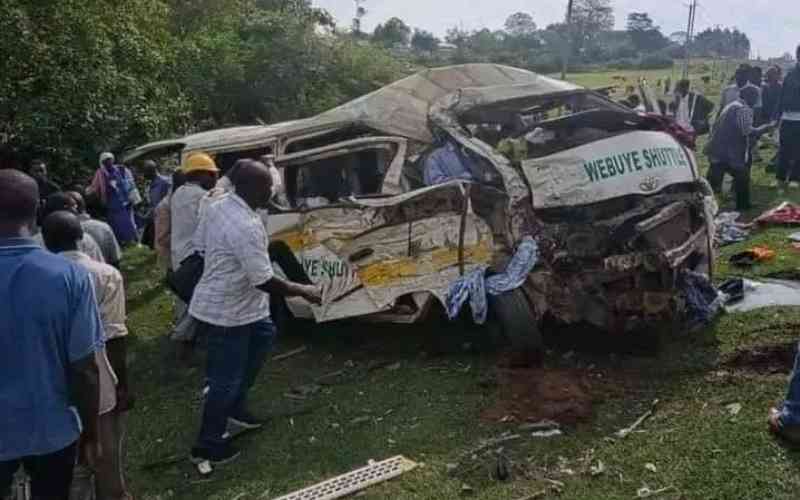The Kenya National Highways Authority (KeNHA) is yet to address unmarked bumps blamed for a number of tragic accidents.
A horrific road accident along the Nairobi-Naivasha highway on December 11, 2016, in which 43 people died, was attributed to unmarked bumps.
The accident drew the ire of President Uhuru Kenyatta who directed KeNHA to ensure road bumps were installed only where they were needed and were clearly marked with appropriate signs.
"We do not want to say we are constructing better roads only for them to finish our people. And the Ministry of Transport, this thing of putting up bumps haphazardly must stop," Uhuru said.
Transport Principal Secretary Irungu Nyakera admitted there were no proper warning signs where the accident occurred and promised his ministry would address the issue across the country.
To date, unmarked bumps and rumble strips still dot Nairobi roads. But unpredictable and unmarked bumps are not the only problem on the roads.
The habit of digging up city streets to lay pipes and internet cables is on the rise, with many contractors leaving heaps of rubble on the roads once they are through with their work.
UNMARKED BUMPS
Limuru Road near Village Market has been dug up six times. Motorists now have to put up with what appears to be six poorly-built bumps.
On the same road, just after the new Two Rivers Mall, a series of unmarked bumps dot the road up to St Joseph Allamano Catholic Church.
On Waiyaki Way, two unmarked bumps near Safaricom Centre pose a major risk to new drivers on the route, especially at night.
The capital city is also notorious for poorly marked zebra crossings, where pedestrians are forced to fight with motorists for the right of way.
Hawkers and a blatant disregard for traffic rules by public service vehicles have only made the situation worse, especially along Kenyatta Avenue, Mama Ngina Street, City Hall Way, Tom Mboya Street, Moi Avenue, Aga Khan Walk and Ronald Ngala Street.
On Moi Avenue and River Road, hawkers have converted most of the roads into open-air markets.
In Ngara, food vendors have converted passenger waiting bays into open kitchens where they cook food to sell to matatu operators.
Stay informed. Subscribe to our newsletter
Hawkers have also occupied roads in the estate, blatantly displaying their wares outside residential gates, sometimes even using private perimeter walls.
Kenya Private Sector Alliance CEO Carole Kariuki said she was engaging the national and county governments to get sufficient designated areas for hawkers.
"We have to find out whether the situation is influenced by politics," she said.
 The Standard Group Plc is a
multi-media organization with investments in media platforms spanning newspaper
print operations, television, radio broadcasting, digital and online services. The
Standard Group is recognized as a leading multi-media house in Kenya with a key
influence in matters of national and international interest.
The Standard Group Plc is a
multi-media organization with investments in media platforms spanning newspaper
print operations, television, radio broadcasting, digital and online services. The
Standard Group is recognized as a leading multi-media house in Kenya with a key
influence in matters of national and international interest.
 The Standard Group Plc is a
multi-media organization with investments in media platforms spanning newspaper
print operations, television, radio broadcasting, digital and online services. The
Standard Group is recognized as a leading multi-media house in Kenya with a key
influence in matters of national and international interest.
The Standard Group Plc is a
multi-media organization with investments in media platforms spanning newspaper
print operations, television, radio broadcasting, digital and online services. The
Standard Group is recognized as a leading multi-media house in Kenya with a key
influence in matters of national and international interest.







